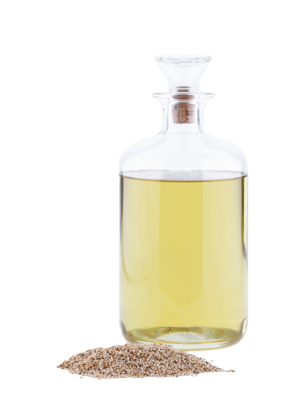Our Sesame oil qualities
We carry Sesame oil in the following qualities for you
Usage
|
Cosmetics |
Food |
Pharmaceutics |
|
|---|---|---|---|
| Sesame oil refined pressed Ph. Eur. | |||
| Sesame oil cold pressed | |||
| Sesame oil pressed toasted | |||
| Organic sesame oil refined pressed Ph.Eur. | |||
| Organic sesame oil cold pressed | |||
| Organic sesame oil toasted |
|
Cosmetics |
Food |
Pharmaceutics |
|
|---|---|---|---|
| Sesame oil refined pressed Ph. Eur. | |||
| Sesame oil cold pressed | |||
| Sesame oil pressed toasted | |||
| Organic sesame oil refined pressed Ph.Eur. | |||
| Organic sesame oil cold pressed | |||
| Organic sesame oil toasted |

Sesame plant & sesame seeds
The sesame plant is one of the oldest oil plants in the world and the oil extracted from it is considered the oldest edible oil in the world. Sesame belongs to the sesame family (Pedaliaceae) and is an annual herbaceous plant that can reach a height of up to two meters. Visually, the plant resembles our foxglove, bears elongated, oval, 4-20 cm long leaves on a straight, branched stem. The tubular, fluffy hairy flowers in white, pink or purple are developed about six weeks after sowing. During the ripening period, the sesame plant forms oval seed capsules close to the stem, which burst open when ripe and the seeds fall out. This distributes the sesame seeds in all directions. To avoid this, the stalks are cut off by hand shortly before full ripeness, just above the ground, and placed in bundles to dry. By shaking the dried plant intensively, the seeds fall out of the capsule. The 2 mm large seeds appear in black and golden yellow to light brown. The black variety is the original form of sesame.
Sesame seeds thrive in moderately humid, tropical to subtropical, warm regions. During the growth period, the plant requires temperatures of 20-24°C and humidity, during the ripening of the seeds dryness and a frost-free period of at least five months. Because of these conditions, sesame is one of the riskiest plants.
Would you like to be informed about the general market situation of Sesame oil and our other products?
subscribe to market reportCultivation and yield
The oil plant is cultivated in many tropical and subtropical countries around the world. These include South and Central America, Africa and India.
The world's largest cultivation area is India, the main harvesting season is in September.
About three kilograms of sesame seeds are needed for one liter of sesame oil.

Background / history
There is evidence that sesame was already being cultivated around 2100 BC, but estimates suggest that sesame was already being used in 4000 BC. In today's Syria/Iraq a clay tablet from 2000 BC was found. On this tablet it was written in Babylonian cuneiform script "with sesame the gods season". This shows the high esteem in which sesame was already held at that time.
In the tomb of the Egyptian King Tutankhamun, sesame was found as an admixture. Also, in ancient Greece sesame oil was used as an anointing oil for births, weddings and death.
The saying "open sesame" from the fairy tale of Ali Baba and the 40 robbers is actually based on the opening mechanism of the sesame bud and is aimed at the sesame harvest in the Babylonian-Assyrian period.
Originally sesame comes from the countries of the Indian Ocean, East Africa and India. Today, sesame is mainly grown in India, China, Mexico, Sudan, Egypt and the former Soviet Union.
25,000
kg
Tank truck
900
kg
IBC
195
kg
Drum
27
kg
Canister
General durability: canister 12 months, drum 18 months, IBC 6 months
Nutritional values & composition
| Nutritional value | (per 100g) |
| Energy | 3,700 kJ / 900 kcal |
| Fat | 100 g |
| Saturated fatty acids | 16 g |
| Monounsaturated fatty acids | 39 g |
| Polyunsaturated fatty acids | 45 g |
Fatty acids ratio
Composition
| C16:0 Palmitic acid | 7 – 12 % |
| C18:0 Stearic acid | 3.5 – 6 % |
| C18:1 Oleic acid | 35 – 50 % |
| C18:2 Linoleic acid | 35 – 50 % |
You want to buy Sesame oil?
Request now free of charge and without obligation from Gustav Heess. We deliver Sesame oil ...
- worldwide
- fast
- reliable
We offer Sesame oil in the following packaging units:
-
25,000
kg
Tank truck -
900
kg
IBC -
195
kg
Drum -
27
kg
Canister

